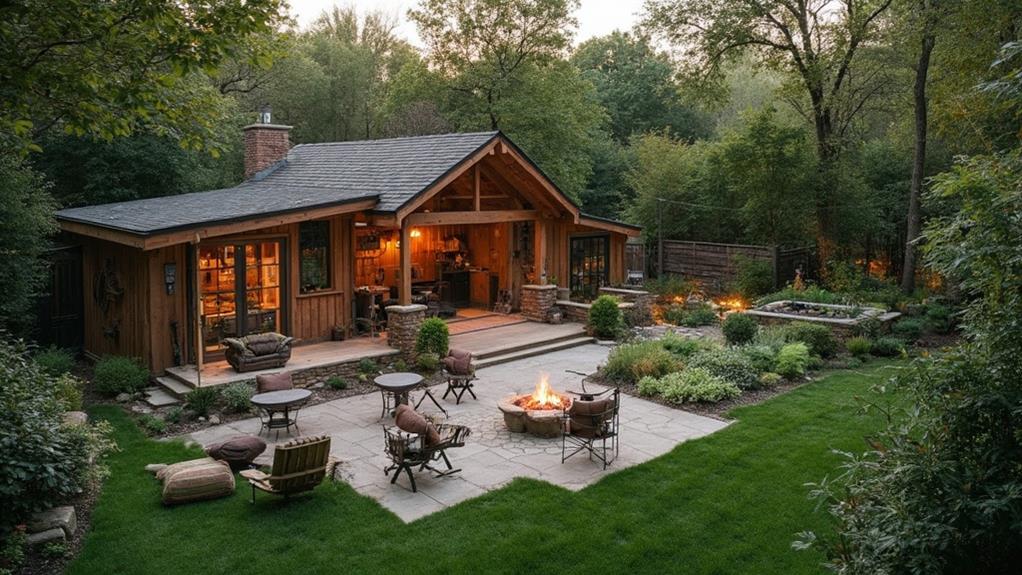Renovating your backyard for outdoor hobbies involves careful planning and execution. Start by assessing your available space, considering factors like sunlight, drainage, and local regulations. Design dedicated zones for activities such as gardening, cooking, or sports. Create a detailed budget, accounting for materials, labor, and potential surprises. Prepare the ground by clearing debris, addressing drainage issues, and testing soil quality. Incorporate features like raised beds for gardening, durable workstations for projects, and weather-resistant equipment for fitness areas. With thoughtful design and proper preparation, you can transform your backyard into a personalized haven for your favorite outdoor pursuits. The following sections offer deeper insights into creating your ideal outdoor space.
Assessing Your Outdoor Space
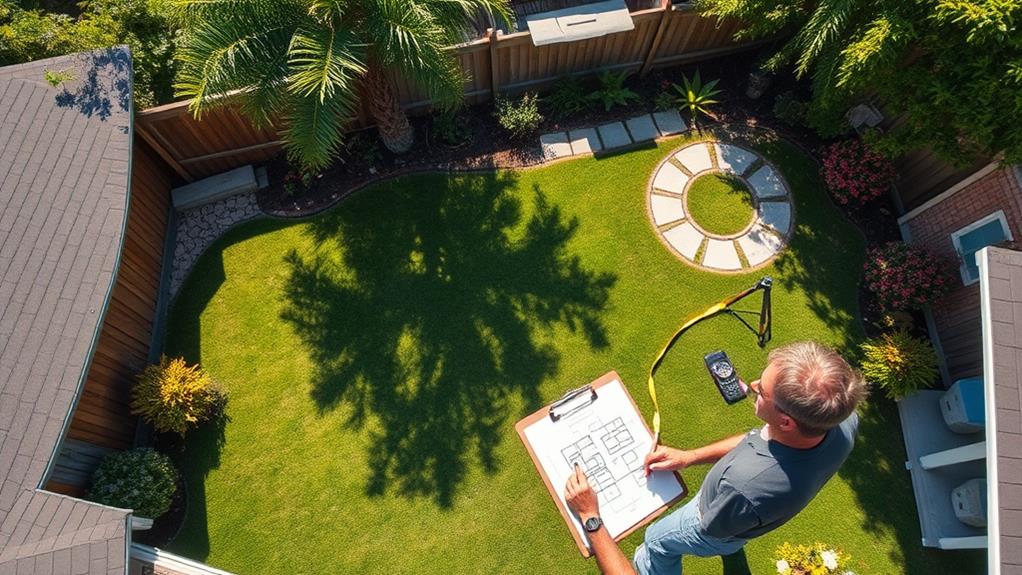
An essential first step in renovating your outdoor space for hobbies is to conduct a thorough assessment. Begin by measuring the available area, taking note of existing features like trees, slopes, or structures. Consider sunlight exposure, drainage patterns, and wind direction, as these factors can significantly impact your outdoor activities.
Evaluate your property's boundaries and any local zoning regulations that may restrict your renovation plans. Identify utility lines, irrigation systems, and other underground elements that could affect construction. Assess the current condition of your outdoor space, including soil quality, existing vegetation, and hardscape features.
Next, prioritize your outdoor hobbies and determine the space requirements for each activity. Consider multi-functional areas that can accommodate various pursuits. Take into account storage needs for equipment and supplies related to your hobbies. Analyze traffic flow and accessibility, ensuring convenient pathways between different zones.
Designing Your Hobby Zones
With a thorough assessment of your outdoor space completed, the next step is to design your hobby zones. Begin by creating a detailed layout plan, allocating specific areas for each activity. Consider the space requirements, equipment storage needs, and optimal positioning for each hobby zone.
For gardening enthusiasts, design raised beds, greenhouse areas, or vertical gardens. Incorporate proper irrigation systems and ensure adequate sunlight exposure. Woodworking zones should include a sturdy workbench, tool storage, and ample space for larger projects. Consider installing a covered area to protect against weather elements.
For outdoor cooking aficionados, design a fully-equipped outdoor kitchen with countertops, storage, and appliances. Include a dining area for entertaining guests. Fitness enthusiasts might benefit from a dedicated workout space with weather-resistant equipment and shock-absorbing flooring.
When designing hobby zones, prioritize functionality and flow between areas. Ensure proper lighting for evening activities and incorporate storage solutions to keep equipment organized. Consider multi-purpose spaces that can adapt to different hobbies or seasonal changes. By carefully planning and designing your hobby zones, you'll create a personalized outdoor space that caters to your specific interests and enhances your enjoyment of outdoor activities.
Budgeting for Backyard Renovations
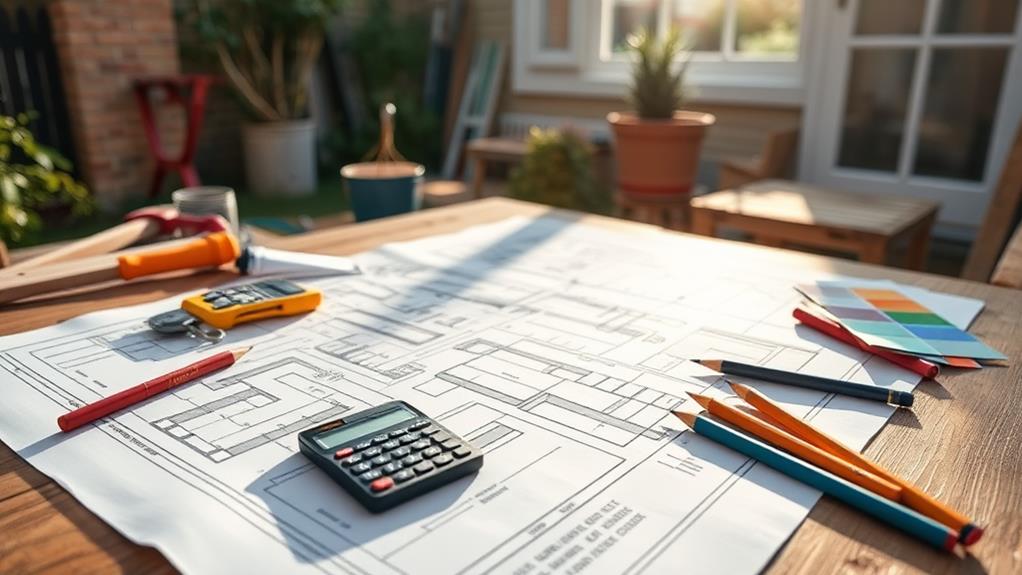
Once you have designed your outdoor hobby zones, creating a comprehensive budget for your backyard renovation becomes crucial. Begin by itemizing all necessary materials, equipment, and labor costs for each zone. Research prices from multiple suppliers to ensure competitive rates. Factor in any permits or inspections required by local authorities.
Consider prioritizing your hobby zones based on importance and available funds. This allows for a phased approach if the total cost exceeds your initial budget. Don't forget to allocate funds for site preparation, including grading, drainage, and utility adjustments.
Include a contingency fund of 10-20% to cover unexpected expenses or design changes. For specialized features like water elements or custom structures, consult professionals for accurate cost estimates. Remember to account for long-term maintenance costs in your budget planning.
Explore cost-saving options such as repurposing existing materials, DIY projects, or sourcing second-hand equipment. However, don't compromise on safety or quality for essential components. Balance your desire for a fully-equipped hobby space with financial prudence to create a sustainable and enjoyable outdoor area that aligns with your interests and budget constraints.
Preparing the Ground
After finalizing your budget, the next step in realizing your outdoor hobby space is preparing the ground. This crucial phase involves several key steps to ensure a stable foundation for your project.
Begin by clearing the area of any existing vegetation, debris, or obstacles. Remove rocks, roots, and other potential impediments to create a clean slate.
Next, assess the terrain's topography and address any drainage issues. Proper grading is essential to prevent water accumulation and erosion. Consider installing a French drain or other drainage solutions if necessary.
Once the area is cleared and leveled, conduct a soil test to determine its composition and pH levels. This information will guide you in selecting appropriate materials and plants for your specific outdoor hobby.
For areas that will support structures or heavy equipment, compaction may be required. Use a plate compactor or roller to create a solid base. If you're planning to install pavers or a patio, excavate the area to the appropriate depth and add a layer of crushed stone or gravel for stability.
Gardening and Landscaping Areas
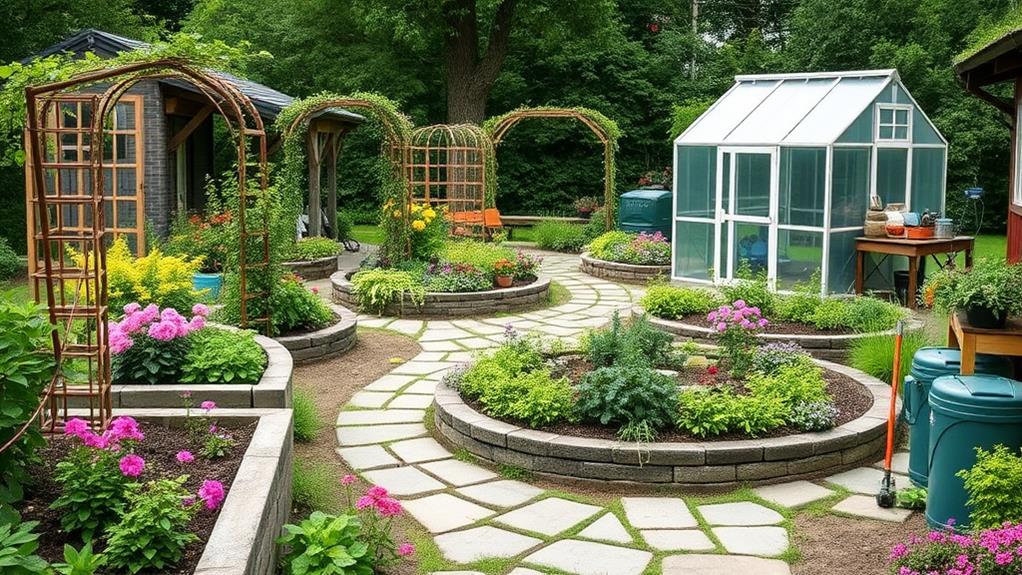
Designing gardening and landscaping areas requires careful planning to create functional and aesthetically pleasing spaces. Consider the overall layout, incorporating raised beds, in-ground plots, and container gardens to maximize growing potential. Evaluate sun exposure and soil conditions to determine optimal placement for different plant varieties.
Include pathways for easy access and maintenance, using materials like gravel, stepping stones, or mulch. Incorporate storage solutions for tools and equipment, such as a shed or built-in cabinets. Install an irrigation system to ensure consistent watering and reduce manual labor.
Create designated areas for composting and soil preparation. Consider adding a potting bench for seedling cultivation and transplanting tasks. Integrate vertical gardening elements like trellises or wall-mounted planters to maximize space utilization.
For landscaping, focus on creating focal points with ornamental trees, shrubs, or water features. Implement a mix of perennial and annual plants for year-round visual interest. Consider adding seating areas or a pergola to create a relaxing environment for enjoying the garden. Incorporate lighting to extend usable hours and enhance the space's ambiance during evenings.
Outdoor Cooking Stations
Transforming your outdoor space with a well-designed cooking station enhances both functionality and entertainment value. When planning an outdoor cooking area, consider incorporating multiple elements such as a grill, smoker, pizza oven, or even a full kitchen setup. Choose durable, weather-resistant materials like stainless steel, stone, or concrete for longevity and easy maintenance.
Layout is crucial for efficiency and safety. Position the cooking station away from high-traffic areas and ensure proper ventilation. Include ample counter space for food preparation and serving. Storage solutions, such as cabinets or drawers, keep utensils and supplies organized and protected from the elements.
Lighting is essential for evening cooking sessions. Install task lighting over work areas and ambient lighting for a pleasant atmosphere. Consider adding a pergola or awning for shade and protection from rain.
To maximize functionality, integrate a sink with running water and a small refrigerator. For year-round use, invest in heating elements like patio heaters or a fireplace. By thoughtfully designing your outdoor cooking station, you create a versatile space that encourages culinary creativity and enhances your outdoor living experience.
Recreational Sports Spaces

Recreational sports spaces in your backyard can turn your property into a hub of physical activity and family fun. These versatile areas can accommodate a variety of sports and activities, catering to different interests and age groups.
When designing a recreational sports space, consider multipurpose options that maximize the use of available land.
Popular choices include basketball courts, which can double as pickleball or badminton courts with proper line markings. For golf enthusiasts, installing a putting green or driving net can provide year-round practice opportunities. Tennis players might opt for a regulation-sized court or a smaller version for quick games.
Ensure proper surfacing for safety and performance. Options range from synthetic turf to specialized sports flooring. Adequate lighting extends usability into evening hours, while fencing or netting prevents stray balls from entering neighboring properties.
For winter activities, consider a dedicated area that can be flooded for ice skating or used for sledding. Incorporate storage solutions for equipment and seating areas for spectators. By thoughtfully planning your recreational sports space, you can create a dynamic outdoor area that promotes active lifestyles and brings family and friends together.
Relaxation and Meditation Corners
Creating a serene outdoor space dedicated to relaxation and meditation can significantly enhance your home's tranquility and your overall well-being. When designing a relaxation corner, consider incorporating elements that engage the senses and promote calmness. Start by selecting a quiet area of your yard, preferably surrounded by greenery or natural features.
Install comfortable seating options such as cushioned benches, hammocks, or ergonomic chairs. Add a small water feature, like a fountain or miniature pond, to introduce soothing sounds. Incorporate aromatic plants like lavender, jasmine, or chamomile to create a fragrant atmosphere. Use soft lighting, such as solar-powered lanterns or string lights, to maintain a peaceful ambiance during evening hours.
Create visual interest with zen-inspired elements like rock gardens, sand patterns, or carefully arranged potted plants. Consider adding a small pergola or canopy for shade and privacy. Install weather-resistant storage for meditation cushions, yoga mats, or blankets. Lastly, minimize distractions by strategically placing screens or tall plants to block views of nearby structures or busy areas. With thoughtful planning, your outdoor relaxation and meditation corner can become a sanctuary for stress relief and personal renewal.
Maintenance and Seasonal Considerations
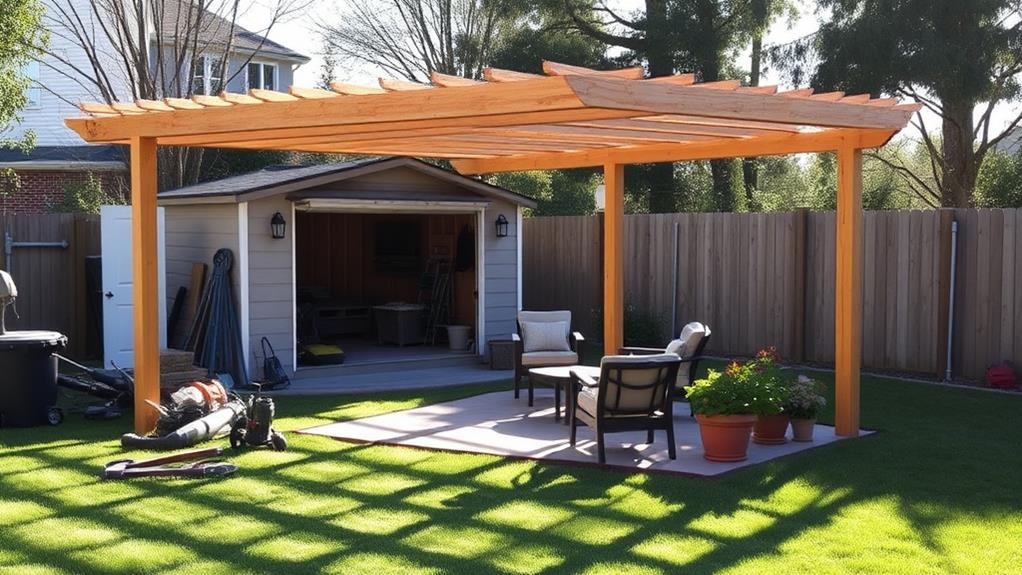
While designing outdoor spaces for hobbies and relaxation is rewarding, maintaining these areas throughout the year requires careful planning and regular upkeep. Consider the seasonal challenges each specialized area may face, such as weather exposure, temperature fluctuations, and pest infestations. Implement protective measures like weatherproof covers for equipment, proper drainage systems, and sturdy storage solutions to safeguard your investments.
Develop a maintenance schedule that addresses specific needs of each hobby space. For gardening areas, this may include soil testing, fertilization, and crop rotation. Outdoor kitchens require regular cleaning and winterizing of appliances. Sports courts need resurfacing and equipment checks. Meditation corners may need pruning of surrounding vegetation and cleaning of water features.
Incorporate low-maintenance materials and plants when possible to reduce ongoing care requirements. Consider installing irrigation systems for gardens and landscaped areas to ensure consistent watering. Regularly inspect structures like pergolas, decks, and sheds for signs of wear or damage. By addressing maintenance proactively and adapting your outdoor spaces for seasonal changes, you can ensure year-round enjoyment and longevity of your specialized backyard areas.
Frequently Asked Questions
How Can I Soundproof My Outdoor Hobby Space for Noise-Sensitive Activities?
To soundproof an outdoor hobby space for noise-sensitive activities, consider installing acoustic fencing, adding dense vegetation as natural barriers, using sound-absorbing materials on surfaces, and incorporating noise-cancelling technology. Insulated walls and roofing can also significantly reduce sound transmission.
Are There Eco-Friendly Alternatives to Traditional Materials for Outdoor Renovations?
"Where there's a will, there's a way" to eco-friendly outdoor renovations. Sustainable alternatives include reclaimed wood, recycled plastic lumber, bamboo, cork flooring, and natural insulation materials. These options reduce environmental impact while creating beautiful, functional spaces.
What Permits Might I Need for Extensive Backyard Renovations?
Extensive backyard renovations often require permits, such as building permits for structures, electrical permits for outdoor lighting, and plumbing permits for irrigation systems. Check with your local zoning department to determine specific requirements for your project.
How Can I Incorporate Smart Technology Into My Outdoor Hobby Spaces?
Smart technology enhances outdoor hobby spaces significantly. Consider integrating weather-resistant Wi-Fi extenders, smart lighting systems, automated irrigation, and security cameras. Voice-controlled speakers and smart power outlets can also add convenience and functionality to your outdoor activities.
What Are Some Child-Safety Considerations for Specialized Backyard Hobby Areas?
Child safety in specialized backyard hobby areas requires careful planning. Key considerations include secure fencing, proper storage of tools and equipment, non-toxic materials, adequate supervision, and age-appropriate design. Regularly inspect for potential hazards and maintain a safe environment.
Conclusion
Transforming backyards into tailored, thriving havens for hobbies harmonizes homes with nature, nurturing new niches for personal passions. Careful consideration of space, design, and durability delivers diverse, delightful outdoor domains. Prudent planning and persistent maintenance preserve these personalized paradises, promoting prolonged enjoyment across seasons. By blending beauty, functionality, and fun, backyard renovations reward residents with rejuvenating retreats, reinforcing the relationship between recreation and residence. These cultivated corners become cherished chambers for creativity, relaxation, and enrichment.
